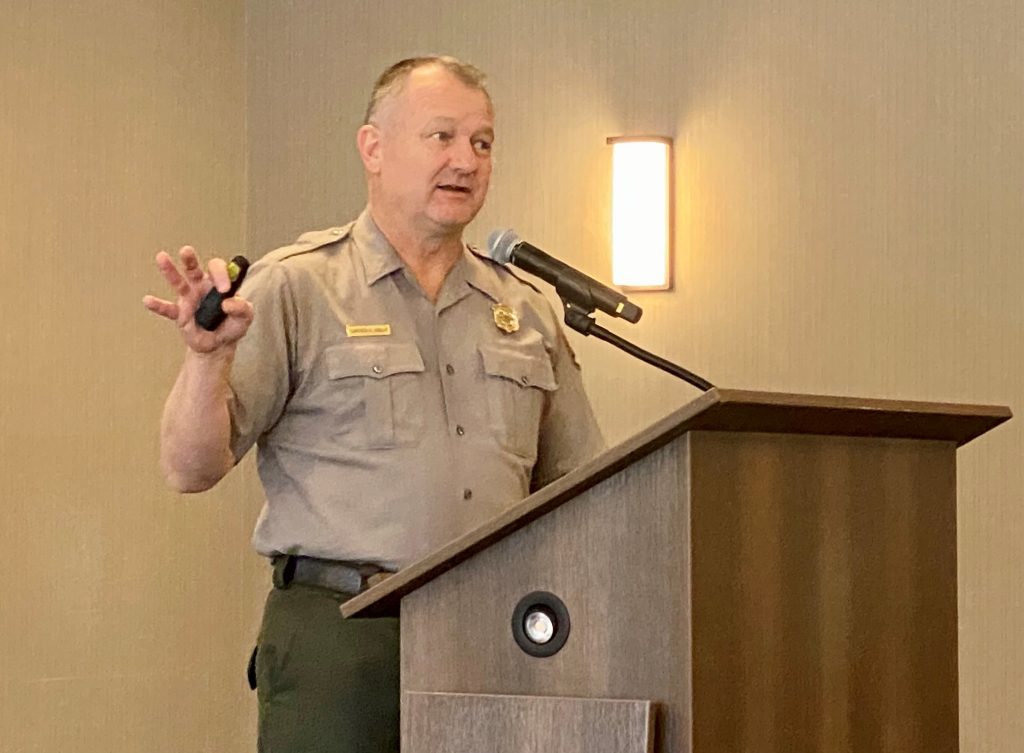Yellowstone National Park has always been one of the top destinations for people wanting to visit beautiful, majestic national parks in America.
In fact, visitors to the nation’s first designated national park may hit a record this year of nearly, or perhaps, over five million recreation tourist.
But with increasing crowds, come higher costs.
Park Superintendent Cam Sholly tells Wyo File that with the ever-increase of the number of people who decide to come and visit the majestic beauty that is YNP in Northwest Wyoming, the price of admission and other fees may have to go up to accommodate the crowds.
“You need people to manage people, and you need people to protect this park, and it’ll be really important for our revenue streams to keep pace with visitation,” Sholly says.
The idea of raising prices is an on-going discussion as crowd and other logistical services are becoming larger and more expensive.
“When you have roughly 30,000 visitations a month in the winter months, and in the range of a million a month in the summer months, you’ve got a lot to manage,” Sholly said. That includes all the less obvious, and less glamorous, logistics. “So you think about cleaning 500 bathrooms three times a day instead of one, or emptying 1,500 garbage cans four times a day instead of two,” he said. “That has a direct impact on staffing capabilities.”
Then there are other expenses that can’t be planned or anticipated like emergency situations that involve the health and safety of park visitors.
The park experienced as many as 80 medical calls per week this summer, he said, plus a significant number of law enforcement incidents and rescues. Park crews truck out a million pounds of garbage per month, and will treat 270 million gallons of drinking water in 2024.
Later this year, Sholly says, the staff will scrutinize at what will be the right amount of staffing to meet the increased need for Yellowstone. And the question that will need to be answered is a financial one: should the park raise entrance and other fees to make sure staffing is adequate for visitors?
“The revenue streams are generally flat, and the visitation line is increasing substantially,” he says. “So that delta is impact, and the bigger that delta is, the more impact there is on staff and infrastructure and operations … so we really need to think about strategically what we’re going to be doing in the future.”
Infrastructure projects, housing
With annual visitation surpassing 4 million over the last decade, the park has thus far relied on a strategy of reallocating staff in certain areas to manage increased workload demands, Sholly says. “But you can only reallocate to a certain degree.”
That’s where the evaluation of staff levels comes in, along with “what other types of actions need to be evaluated from the future for managing visitation.”
It costs $35 for a private vehicle to enter the park — which Sholly notes is affordable. Fee revenue provides around $14 million a year on average, the Superintendent says. The bulk of the park’s revenue, meanwhile, comes from a federal appropriation of roughly $40 million annually.
But Yellowstone has received several funding allocations in recent years for infrastructure and housing.
$118 million was acquired from the Great American Outdoors Act to replace the Yellowstone River Bridge, and $16 million from the Infrastructure Investment and Jobs Act for road, bridge, and other projects after the devastating floods in 2022. The park also received an anonymous $40 million gift in early 2024 to expand and improve NPS employee housing.
Since 2019, the park has put close to $50 million into employee housing projects and crews have replaced all the trailers in the park with new modular housing and rehabilitated non-trailer housing. The $40 million donation, meanwhile, will be used to build 70 new employee housing units. About half of Yellowstone’s 800 employees live in park housing.
The housing projects aim to address a shortage of park employee dwellings exacerbated by skyrocketing real estate in park gateway communities like Cody. Those shortages have made it tough to attract and retain workers.
“On the infrastructure side, I feel very good with the track that we’re on in relationship to the improvements that we’re making,” Sholly said. “On the staffing [level] side, that’s another story we need to figure out.”










